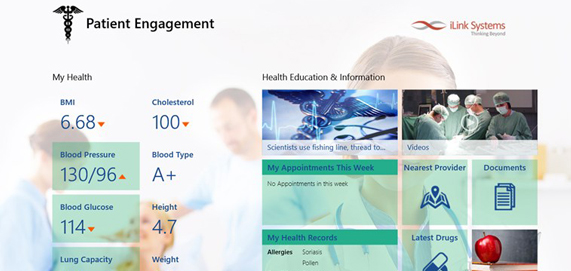Patient Engagement

We all have our own definitions of “Patient Engagement”. Though they might differ in words, to the most part, the meaning will be almost the same. In simple words, engaging the patient to improve health outcomes is how I would define it. Till recent times, a Patient Engagement solution would primarily bring data from the Electronic Medical Record (EMR) and take the shape of a wellness solution. This was due to the fact that most hospitals, after making huge investments in their EMR, believed that the EMR would become the primary storage of patient data. But that is not how it is turning out to be. Interoperability has been a major challenge for the healthcare industry. A few years back, when EMR implementations were just beginning, patient data were being stored in disparate systems. At that time, a primary initiative at hospitals was to integrate the disparate systems to the EMR, so as to have a cohesive view of the patient data to make better decisions. The value of the effort that was put in to make systems interoperable seems to be going down, since in today’s world, more and more disparate systems are blossoming and are storing patient data. This is due to proliferation of devices, applications and the cloud. Patients are using a variety of medical devices that either store the patient data within it or send the data to the cloud. In addition, they are using numerous health applications on their smart phones or tablets. These applications also store patient data. The interoperability problem that we had a few years back seems to be going out of control and expanding at a rapid pace. To enable clinicians to make better health decisions and for patients to better engage themselves in managing their health, these data must be brought together, filtered as necessary, analyzed and reported upon.
The amount of patient data has been exploding, and analyzing large data sets, so-called big data, will become a foundation for patient engagement and will aid healthcare organizations to better compete and differentiate in the market. Big Data is the term for a collection of data sets so large and complex that it becomes difficult to process using the data management tools that have been widely used over the past years. What I described above – health data explosion from a variety of sources and mediums is Big Data. The potential to personalize medicine is tremendous with all these data being available to be unlocked into useful information. Healthcare organizations use Big Data analytics for forecasting, patient monitoring, preventive care, epidemiology, fraudulent claims analysis, clinical quality metrics, care management, etc. Access to these diverse data will be critical and healthcare organizations will increasingly need to integrate information from multiple data sources to make meaningful assessments to better engage patients in managing their health.
[simple-social-share]


